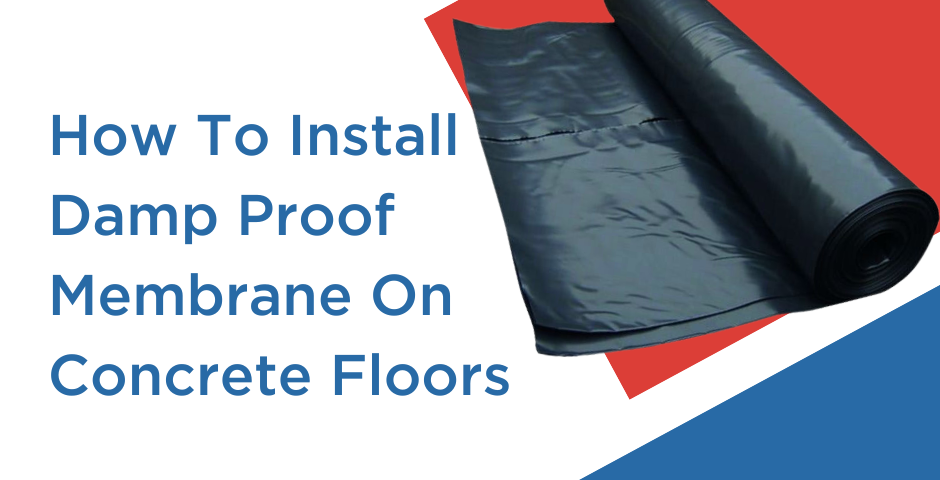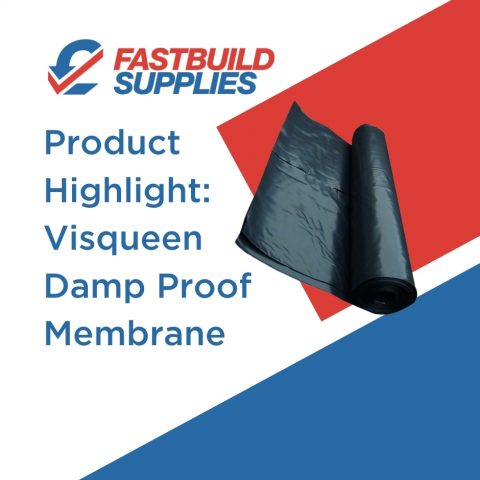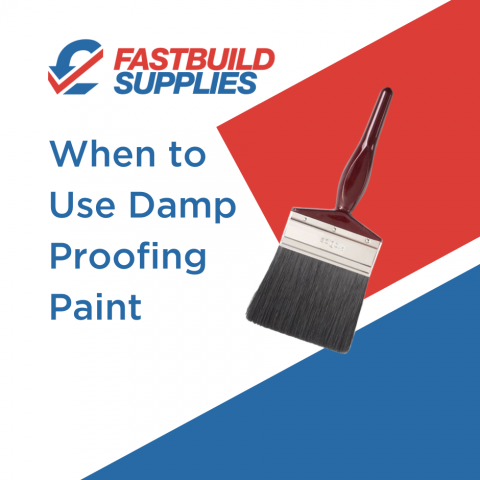
Installing a damp proof membrane (DPM) on concrete floors is required to prevent moisture from seeping through the concrete and causing issues such as mould, mildew, and damage to flooring materials.
In this guide, we will walk you through the step-by-step process of installing a damp proof membrane on concrete floors.
Materials and Tools Needed For Installing a Damp Proof Membrane on Concrete Floors
- Damp proof membrane (usually made of polyethylene or bitumen-based materials)
- Duct tape or membrane jointing tape
- Utility knife
- Measuring tape
- Scissors
- Clean, dry cloth
- Heavy objects or adhesive to secure the membrane temporarily
- Safety equipment (gloves, goggles, mask)
How to Lay Damp Proof Membrane on Concrete Floors
Step 1: Prepare the Concrete Surface
Ensure that the concrete floor is clean, dry, and free of dust, debris, and any loose materials. Clean the surface thoroughly to promote good adhesion of the DPM. If the concrete floor is uneven, consider levelling it using a self-levelling compound to ensure a smooth surface for the DPM.
Step 2: Measure and Cut the Damp Proof Membrane
Measure the dimensions of the room to determine the amount of damp proof membrane required. Add some extra inches to the measurements if needed to allow for overlaps and adjustments.
Roll out the damp proof membrane on a flat, clean surface, and use a measuring tape and a utility knife or scissors to cut the membrane to the required size.
Step 3: Primer
Depending on the type of DPM you are laying, you may need to apply a layer of primer over the cleaned and levelled concrete surface. The primer enhances the adhesion of the DPM to the concrete. Follow the manufacturer's instructions on the primer label and allow it to dry completely before proceeding to the next step.
If you are laying our Self Adhesive Tanking Membrane, then you will want to first apply the High Performance Tanking Primer, which is designed to prepare surfaces prior to the application of Visqueen self-adhesive and torch-applied damp proof and tanking membranes.
Step 4: Lay Out the Damp Proof Membrane
Unroll the damp proof membrane carefully over the concrete floor, ensuring it covers the entire surface. If you have multiple rolls, overlap the edges of the membrane by a few inches to create a watertight seal.
If you have to join two sheets of membrane, use membrane jointing tape to secure the seams. Make sure the joints are tight and sealed properly to prevent moisture infiltration.
Step 5: Secure the Membrane
Temporarily secure the edges and corners of the damp proof membrane using heavy objects or adhesive. This will prevent the membrane from moving during the installation of the final flooring material.
Step 6: Trim Excess Membrane
Trim any excess membrane along the edges of the room to achieve a neat and tidy finish.
Step 7: Install Final Flooring
Once the damp proof membrane is properly laid out and secured, you can proceed to install your final flooring material (such as laminate, engineered wood, carpet, or tiles) according to the manufacturer's instructions.
Step 8: Inspect and Seal Gaps
After installing the final flooring, inspect the entire area to ensure there are no gaps or openings where moisture can enter. Seal any gaps or joints with appropriate sealants or adhesives to maintain the integrity of the damp proofing.
By following these steps, you can effectively install a damp proof membrane on concrete floors, ensuring a dry, comfortable, and long-lasting flooring.







